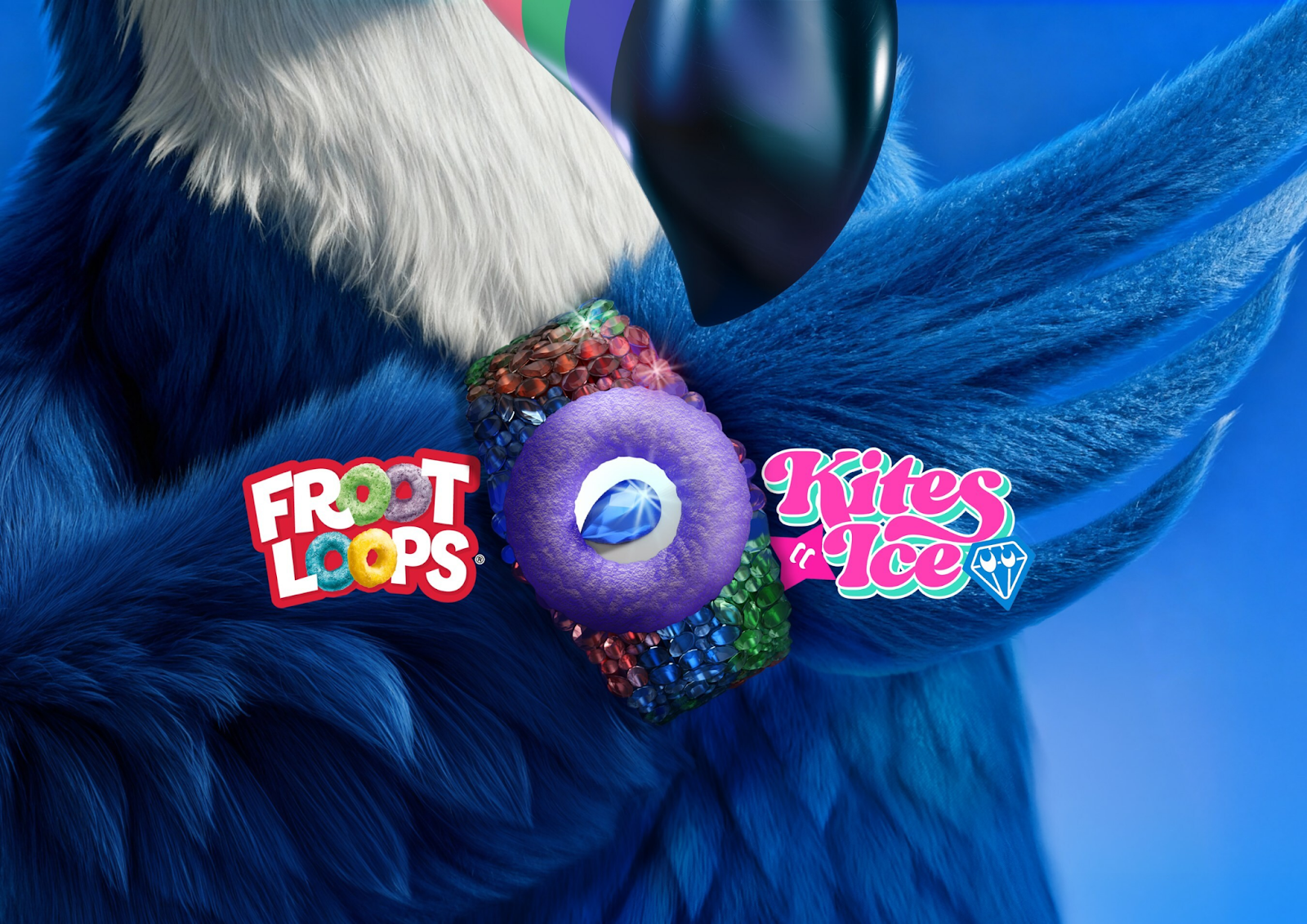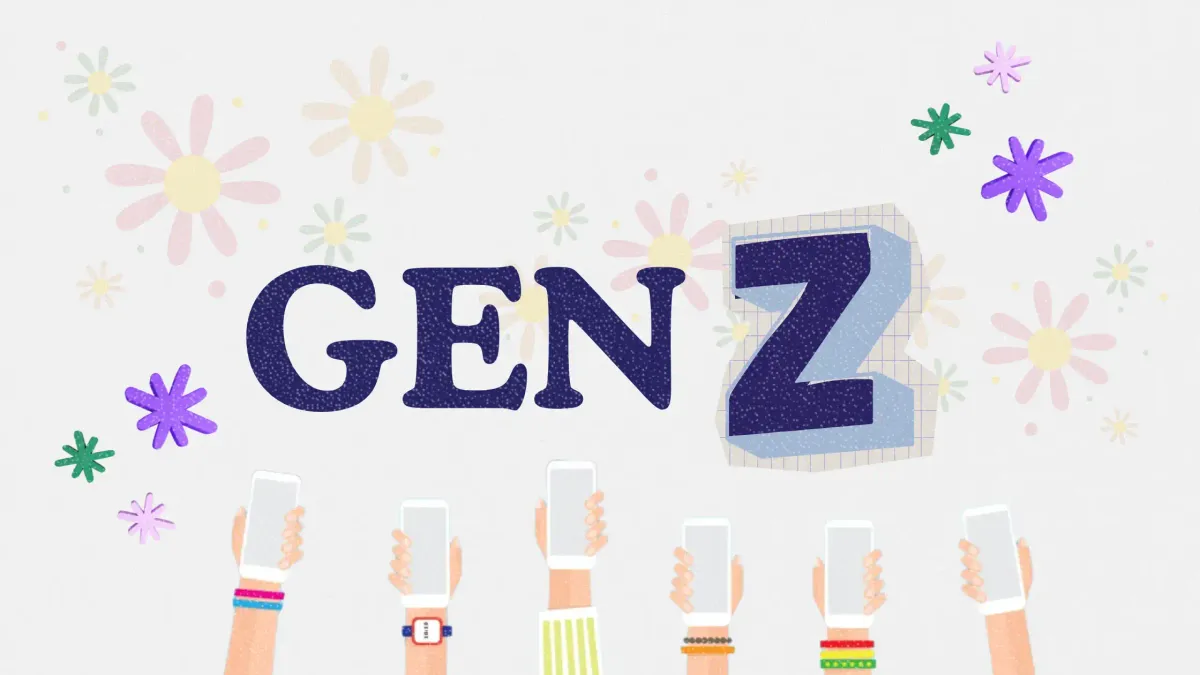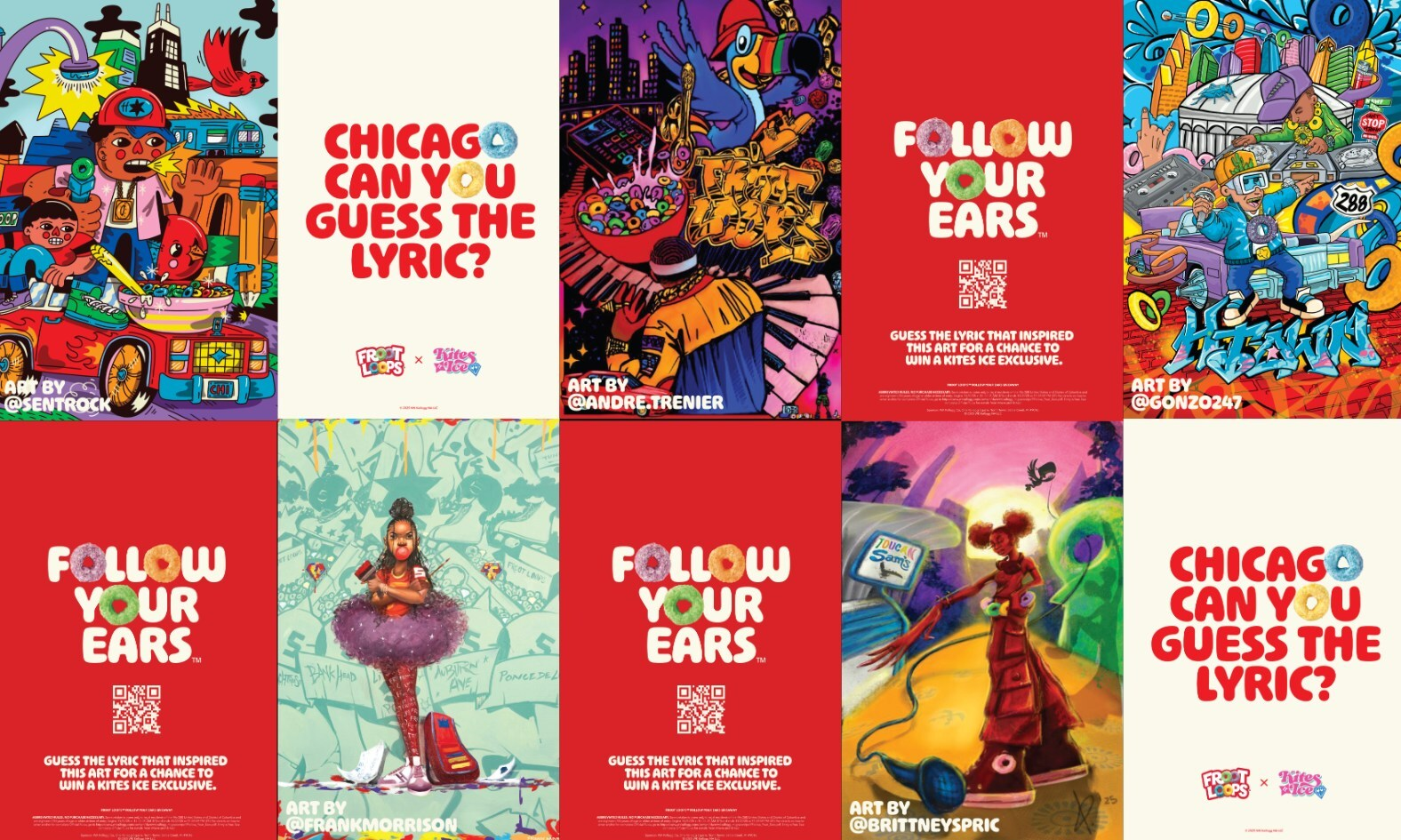Froot Loops taps hip-hop nostalgia with a jewelry collab
A cereal brand just turned decades of hip-hop name-drops into limited-edition art. Here is what marketers can take from the move.

Froot Loops has entered the hip-hop chat, but not in the way most brands jump into music culture. The cereal icon teamed up with Chicago-based jeweler Kristopher Kites to transform more than 1,000 hip-hop lyric name-drops into limited-edition, one-of-a-kind jewelry pieces.
The activation also expands offline. Froot Loops commissioned artists across five cities, including New York, Los Angeles, Chicago, Houston, and Atlanta, to create posters hiding clues tied to classic lyric references. It blends nostalgia, treasure hunt mechanics, and local creative voices into a campaign that stretches across both fan participation and cultural memory.

This article looks at what Froot Loops launched, why it connects to a wider music-led marketing trend, and what marketers may want to consider as brand and artist ecosystems continue to converge.
Short on time?
Here is a table of content for quick access:
- Inside Froot Loops’ new hip-hop crossover
- Why brands are turning to music-led experiences again
- What marketers should know

Inside Froot Loops' new hip-hop crossover
At the center of the campaign is the idea of “follow your ears”, a nod to the brand’s longstanding sensory identity and its overlooked ties to hip-hop.
Kristopher Kites designed two primary collectible categories: a pendant and chain set and a watch. Each piece uses Toucan Sam-inspired gemstones with oversized, playful shapes that mirror his existing art-to-wear style. Fans can enter giveaways on TikTok and Instagram, with an additional 100 accessories also up for grabs.
Alongside the jewelry drop, the multi-city poster series brings in local artists, each interpreting Froot Loops’ hip-hop legacy through their own lens. For Los Angeles, artist Brittney Price described the collaboration as a full-circle moment. The posters also hide visual clues tied to decades of Froot Loops lyric mentions, creating a culture scavenger hunt for fans.

WK Kellogg Co’s Ryan Versfeld framed the push as a celebration of the brand’s cultural presence, while Kites leaned into the blend of childhood nostalgia and hip-hop’s bold aesthetic.

Why brands are turning to music-led experiences again
Froot Loops is not the only brand revisiting music as a creative anchor. Music-driven activations have picked up pace, especially those tied to nostalgia or hyper-specific communities.
@letsflykites #FrootLoopsPartner I’ve been in the lab with @FrootLoops, turning one of my favorite cereals into something crazy. Can’t show you everything just yet, but trust, it’s about to break the box. 🤞✨
♬ original sound - kristopher kites.
In May, McDonald’s Singapore released a rap-driven video to promote its Mac’ n Cheesy breakfast wrap. The short clip blended humor, food-focused lyrics, and social-first storytelling to drive quick attention.
These moves point toward a larger trend. Brands are shifting away from generic influencer placements and toward collaborations that feel rooted in culture. Music provides emotion, communal memory, and built-in shareability, which is increasingly valuable as audiences splinter across platforms.

What marketers should know
Music-driven campaigns and culture-first collaborations are resurfacing as a way for brands to signal authenticity. Froot Loops’ latest activation shows how a legacy brand can borrow credibility from creative communities without feeling forced. These are the takeaways marketers may want to keep in mind.
1. Cultural equity can outperform traditional ad recall
When a brand taps a community with authenticity, whether that is hip-hop, gaming, or local creator circles, it can build affinity that lasts longer than the campaign window. Froot Loops shows how nostalgia and cultural reference can act as attention drivers.
2. Local activations help build national buzz
The city-specific poster drops highlight a trend that has returned strongly in the last few years. Hyperlocal creative moments can generate real-world participation while still feeding national conversation online.
3. Smaller cultural collaborators can add more credibility
Kristopher Kites is not a mainstream celebrity. His niche audience and design style bring cultural weight that big-name partnerships sometimes lack. This suggests that credibility often comes from depth, not scale.
4. Music remains a low-friction way to enter youth and fan culture
Audio trends, lyric references, and music-inspired stories continue to influence social behavior. Brands exploring culture-led marketing may find music an easier entry point compared to other subcultures.
Froot Loops’ campaign is a reminder that legacy brands can re-enter cultural conversations without forcing the connection. By looking at its own history in hip-hop rather than fabricating a link, the brand tapped something that already existed in culture.
One takeaway for marketers is the value of authenticity signals. When brand involvement feels earned, audiences respond. As more brands try to build culture-first campaigns, those who lean into their real histories may have a stronger foundation than those chasing temporary trends.






